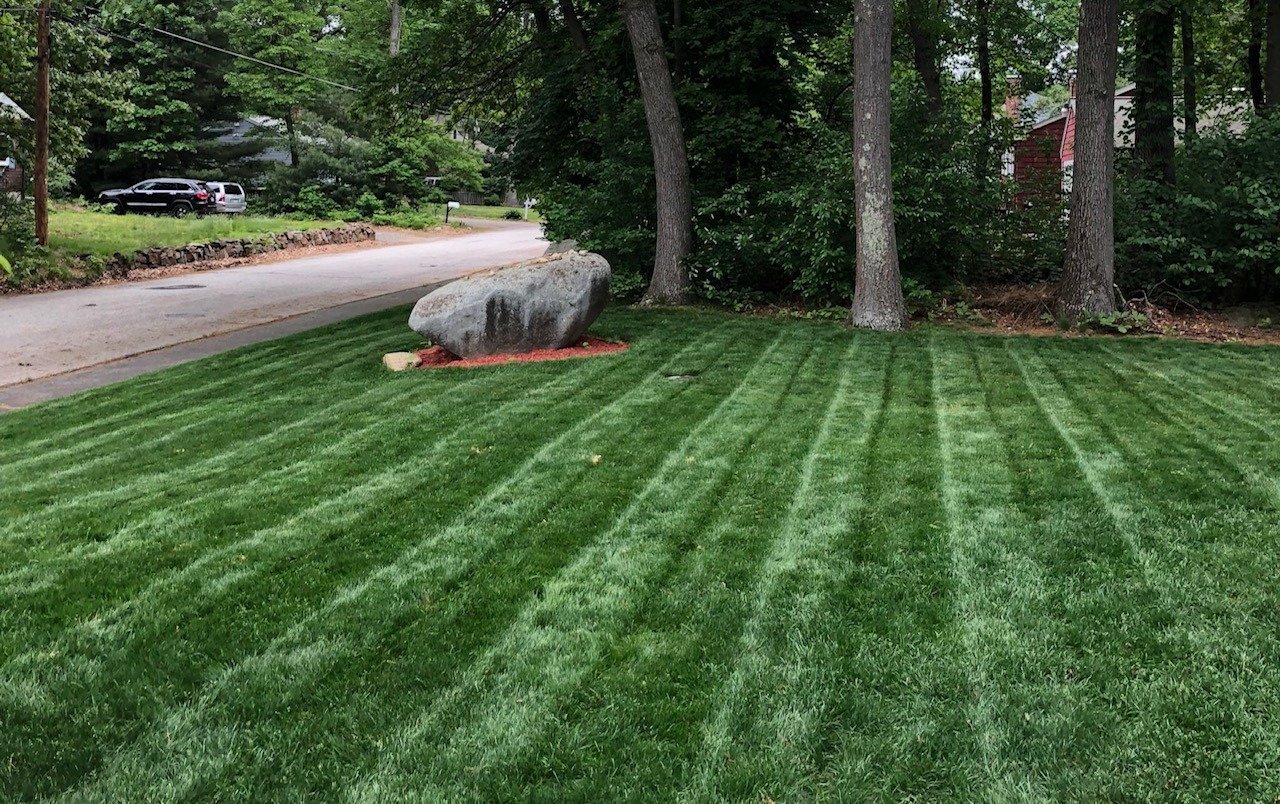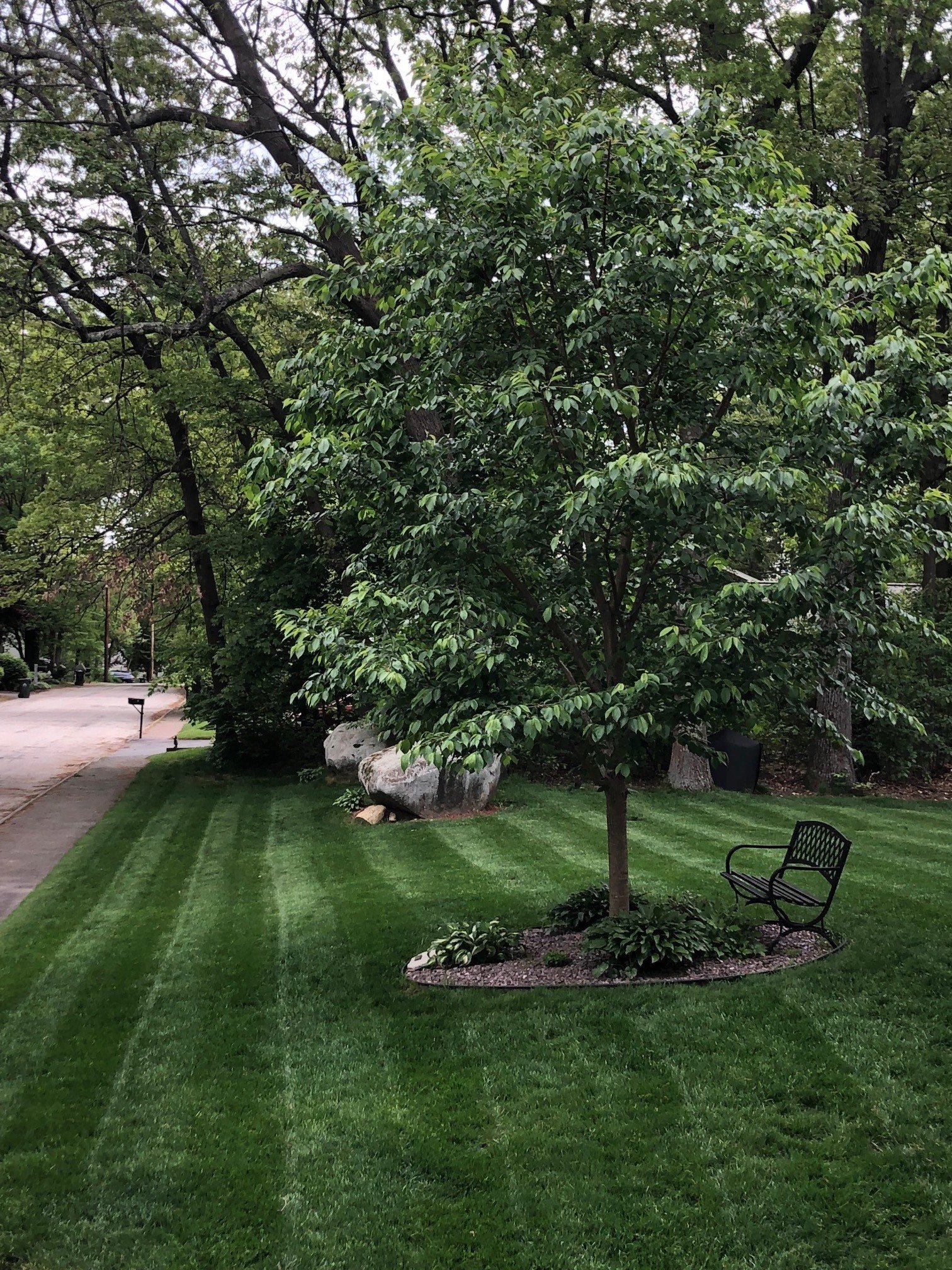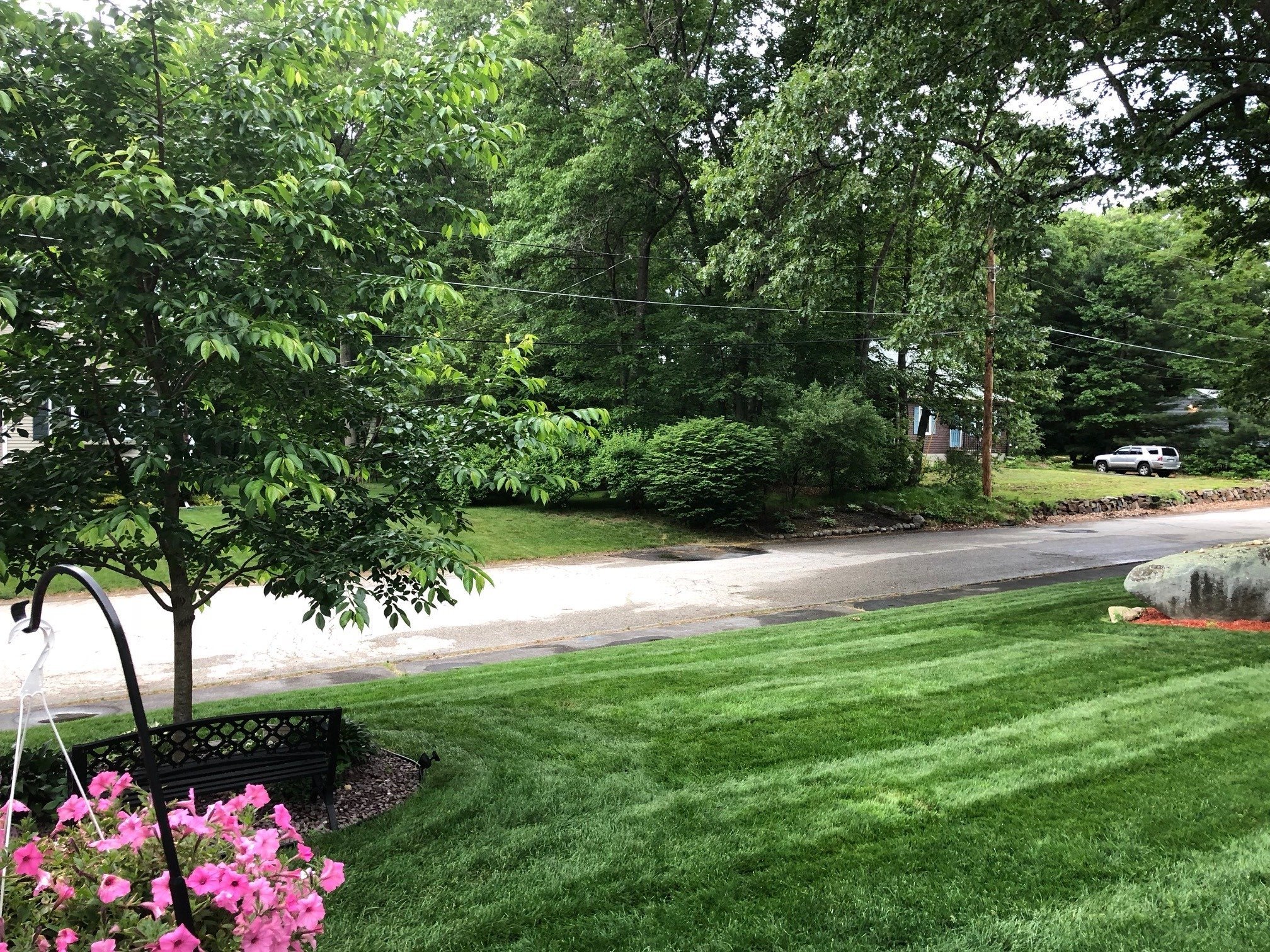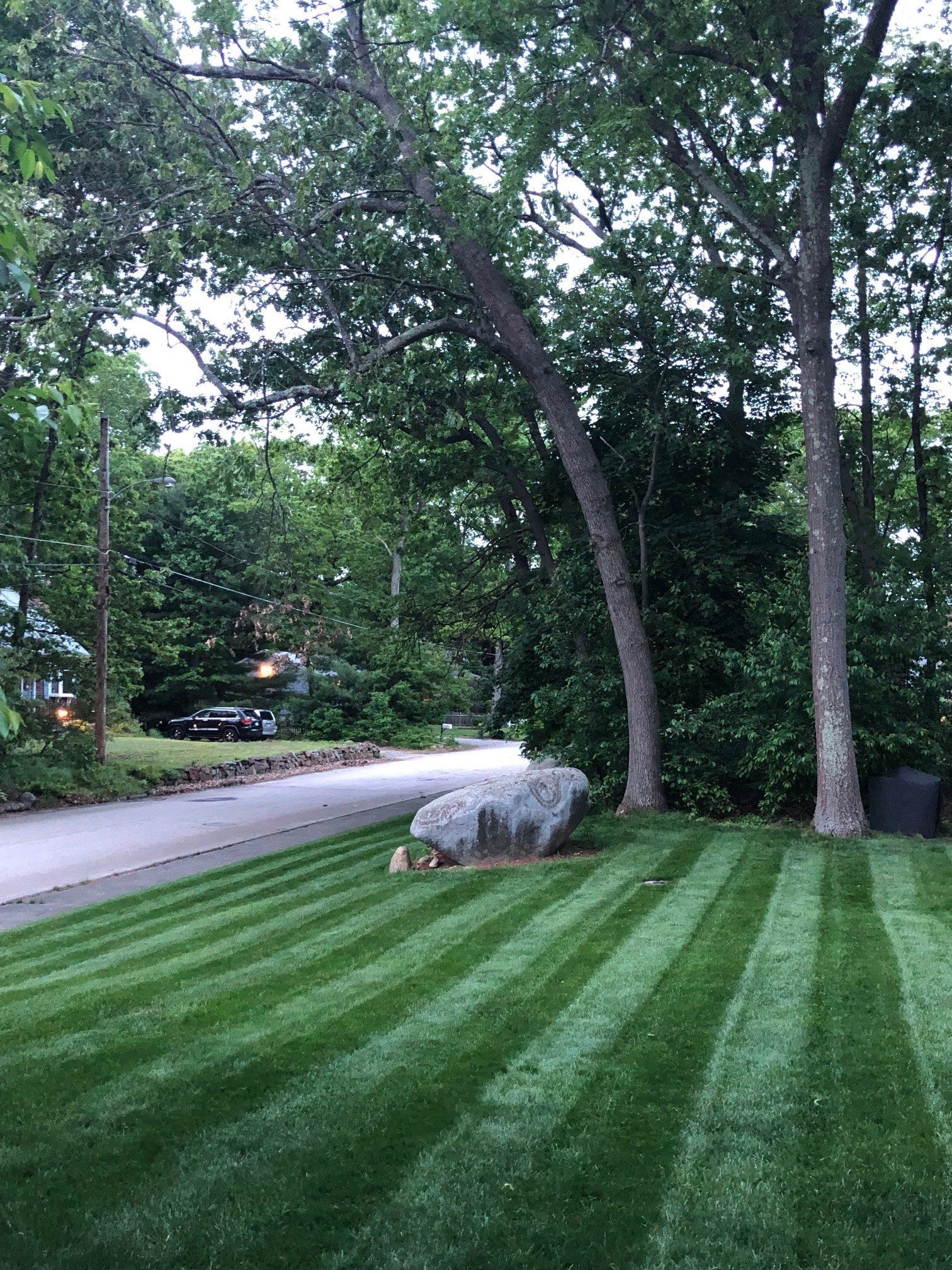For reference, the grass seeds mentioned throughout this review will be referred to:
To have it be a more apples-to-apples comparison, this review is comparing Jonathan Green Black Beauty Original (BB) grass seed versus GCI Premium Turf Type blend (TTTF). Jonathan Green’s Black Beauty is a blend of 3 tall fescues which contains about half Dakota Tall Fescue, and the rest an even split of Taos Tall Fescue, and Tombstone Tall Fescue. Up until this fall of 2018, Jonathan Green BB is the only grass seed that I have used to overseed in the past three (3) years.
GCI TTTF grass seed also contains a blend of three fescue species: Thor, Falcon, and Blacktail (2020).
Black Beauty Ultra is 3 tall fescues, perennial rye (PRG) and kentucky bluegrass (KBG). I’ve used this product in the past, but have never used more than a 3 lbs. bag at a time to spot seed. So to be clear again, I am not comparing the Black Beauty Ultra to the GCI TTTF – but the Black Beauty Original
Table of Contents
The Test
As previously mentioned, from 2015-17 I strictly used Jonathan Green BB. This past September, I decided to try GCI TTTF grass seed instead. I love Pete’s videos and knew he would put out a premium product. And to help patronize his business felt pretty good, too. September 8, 2018 I began the overseeding process. It consisted of using the Brinell tow-behind dethatcher and core aerator, along with lowering my lawn mower settings a notch below normal (around 2.5″). After cutting the grass and prepping the soil, full doses of Milorganite, Jonathan Green Starter Fertilizer, and Pennington Fast-Acting Lime were also applied on September 8th, 2018 – alongwith the 7 lbs./1,000 GCI TTTF. Since then I have put down two full applications of Jonathan Green Winter Survival (10-0-20) between Halloween and Thanksgiving. A previous soil test in the spring showed that my soil was potassium (K) deficient, so I’ve hit it with Lesco Starter, Lesco 19-0-7, Milorganite, and Kelp4Less Extreme Blend.
Price GCI TTTF price vs. Jonathan Green BB price:
Depending on where you buy your Jonathan Green BB, it can range drastically. Your best bet is first checking their website for a retail location near you. as the cost is sure to be much cheaper than Amazon. For online options, Yard Mastery is the place to go for Original and Ultra. Google Express hasd deals, too, which I used for this comparison.
Updated Aug. 2020: Yard Mastery also now sells GCI TTTF (and Cool Blue and Blue Heat KBG) with FREE SHIPPING!
JG BBU: $159.98 / 50 lbs.
GCI: $139.95 / 50lbs.
The GCI TTTF, as far as I know, is only available online at the Lawn & Pest Control Company. After adding a 50 lbs. bag to my cart and waiting a day or so, I was emailed a $5 off coupon. Here’s the price comparisons below: GCI TTTF: $115 ($2.30 per pound) Jonathan Green BB: $80 plus 20% off your first order ($3.20 per pound (link to product)) Be sure to read the “coverage” section as I outline the respective products’ recommended dosages, how big the bags are, the coverage, and break down the price again.
Coverage
On the GCI website they recommend 20% to 50% existing cover – 5 to 7 lbs. per 1,000 sq. ft. I have about 16,000 total square feet and bought two bags (100 lbs.) which ended up being ~6 lbs./1,000 sq. ft. of overseeding. Jonathan Green says their 50 lbs. bag covers up to 15,000 sq. ft. However, this equals just over 3 lbs./1,000 sq. ft. which would only get you less than what GCI TTTF recommends (50% to 75% existing cover – 4 to 7 lbs. per 1,000 sq. ft.). In order to get the same coverage of 6lbs./ 1,000 sq. ft., you’re also going to have to go with 100 lbs. (based on my lawn size)
Thickness
One thing I can’t really take into account here – out of fairness – is the overall thickness of the lawn. While I used the Brinell tow-behind dethatcher and core aerator (double pass, creating plenty of nooks and crannies for the seeds to nestle into) we got hit with a massive rainstorm three days after throwing down the seed down. Some of the seeds got washed away, and I now have nice thick green grasses growing between my brick walkway, sidewalk, and even driveway crevasses! Having said that, I am very pleased with the coverage and overall thickness that grew in this past fall. I suspect it would have been thicker without the washout, nonetheless very pleased. My backyard and side yard are much more flat. I feel like the seeds nestled in much more than my front sloping yard. The results this year have been terrific!
Grass Color
Right off the bat, my GCI Turf seed was not nearly as deep, dark green as Jonathan Green BB after overseeding. While the grass has greened-up nicely this spring, the nod goes to Jonathan Green BB ever so slightly. As previously mentioned, I used lime, Milo, and Jonathan Green starter fert in full doses. Prior to this year I only used Jonathan Green Winter Fertilizer when overseeding in the fall. Could this be the variable? I don’t think so. Milo + starter fert nets much better ‘pound on the ground’ – especially Nitrogen – so I have to go with BB for now. This spring the deep dark green has made a comeback like Ali.






Watering/Germination
These two go hand-in-hand in my opinion. Jonathan Green Black Beauty has a more noticeable waxy coating on their seeds. This help retain moisture when watering the grass seed. Having said that, I was more diligent with watering GCI Turf this fall than in years past. With no irrigation system in place, I’m forced to use and move two impact sprinklers and timers across several different “zones”. My flagship grass section, like most, is the 2,200 sq. ft. that covers my front lawn. The backyard is mainly for the kids and dogs, but in front of my house is where I focus on domination. GCI TTTF took around 14 days for germination to begin, while I saw Jonathan Green BB start to germinate by the Day 10 mark. However, this is all based on my experience. September in Massachusetts still has warm soil temperatures (ideal for seeding) while the days are consistently under 80 degrees, and nights above 40 degrees. In the end, a couple of days here-and-there was no big deal for me. Again, we had torrential rainstorms that played a part in all of this, too.
Conclusion
In conclusion, based on my experiences so far, the nod goes to Jonathan Green BB. Since overseeding with TTTF, the biggest difference for me has been the increase in fungus (I’ve put down two applications of DiseaseEx and one propiconazole which seemed to have did the trick). My lawn is a nice dark green color but I also attribute that to my fertilization schedule and using Kelp4Less Extreme Blend. I had a deep green lawn last year, too, with JG BB, but I also used a similar fertilization strategy with Milorganite and Holganix. However, if you’re looking for a great cool season grass without breaking the bank, GCI TTTF is an incredible option. For under $250 I was able to put down a heavy dose of premium grass seed across 16K sq. ft. And for that reason I’ll probably give GCI TTTF another shot this upcoming fall season if I need to overseed. I’m convinced that you can’t go wrong with either option.
New post –> Jonathan Green Black Beauty Heavy Traffic Grass Seed Review
FAQs
What blend of grass seeds are in GCI Turf Type Tall Fescue (TTTF) blend?
As of January 2020, GCI TTTF grass seed contains a blend of three fescue species: Thor, Falcon 3, and Blacktail.
What’s the difference between Jonathan Green Black Beauty Ultra & Original?
Jonathan Green Black Beauty original contains a blend of three tall fescue grass seeds. Black Beauty Ultra also contains three tall fescues, but with the addition of Kentucky Bluegrass and Perennial Ryegrass.
How much TTTF should I use for overseeding?
For established turf needing routine annual maintenance, 2-5 pounds of grass seed per 1,000 square feet will work well. For thinner lawns needing more of a renovation, upwards of 7 pound per 1,000. And for bare dirt renovations, you can use up to 10 pounds per 1,000.
What’s better: Jonathan Green Black Beauty or GCI TTTF?
In our opinion, both grasses have spectacular results. Germination rates on both grasses were about 6 days each. The color of GCI is a bit darker (almost blue) when regularly mowed, fertilized and maintained. However, we noticed better disease resistance to our Black Beauty grass. In short, the grass blends from both companies are premium quality.

Excellent analysis, great looking lawn. Having the same choice to make, I am grateful for having found your post. I’m in northern Virginia–just outside Washington DC, and will probably go with GCI TTTF like as I did last year for its heat tolerance and mix in a 7 lb bag of JG BB-ultra for fun just to see what happens.
Thanks, Tim! I’ve been meaning to update this post with more info. I think adding JG BB Ultra is a great idea. The mix of rye and KBG will help hedge your bets against Brown Patch which comes with the TTTF territory. Good luck – keep me posted on how you make out.
An you give the seed types or names for the GCITTTF?
Hi David, I am unsure of the types and blends that GCI provides. I’ll reach out to them and ask, and will update if I hear anything.
THOR
FALCON 3
BLACKTAIL
Check out “Winning Colors” by LEBANON Turf, that’s what all the Pros use, at least the Pros that aren’t trying to sell you on their particular product… it’s cheaper too! $83 a bag. 95% germination rate and THE DARKEST GREEN GRASS AVAILABLE! It’s SO Dark Green that it’s almost Blue!
Are these grasses tolerant to Juglone?
Triad area NC
I believe that Kentucky bluegrass and Tall Fescue are tolerant to Juglone, so these TTTF blends should be OK. Just keep them well irrigated and fed, and try to avoid stress for the areas under the tree especially.
I do know that TTTF is OK for the NC/transition zone, so these should be good options for you.
Jonathan green I like their products, but the grass seeds have weed seeds and other crop where as GCI does not